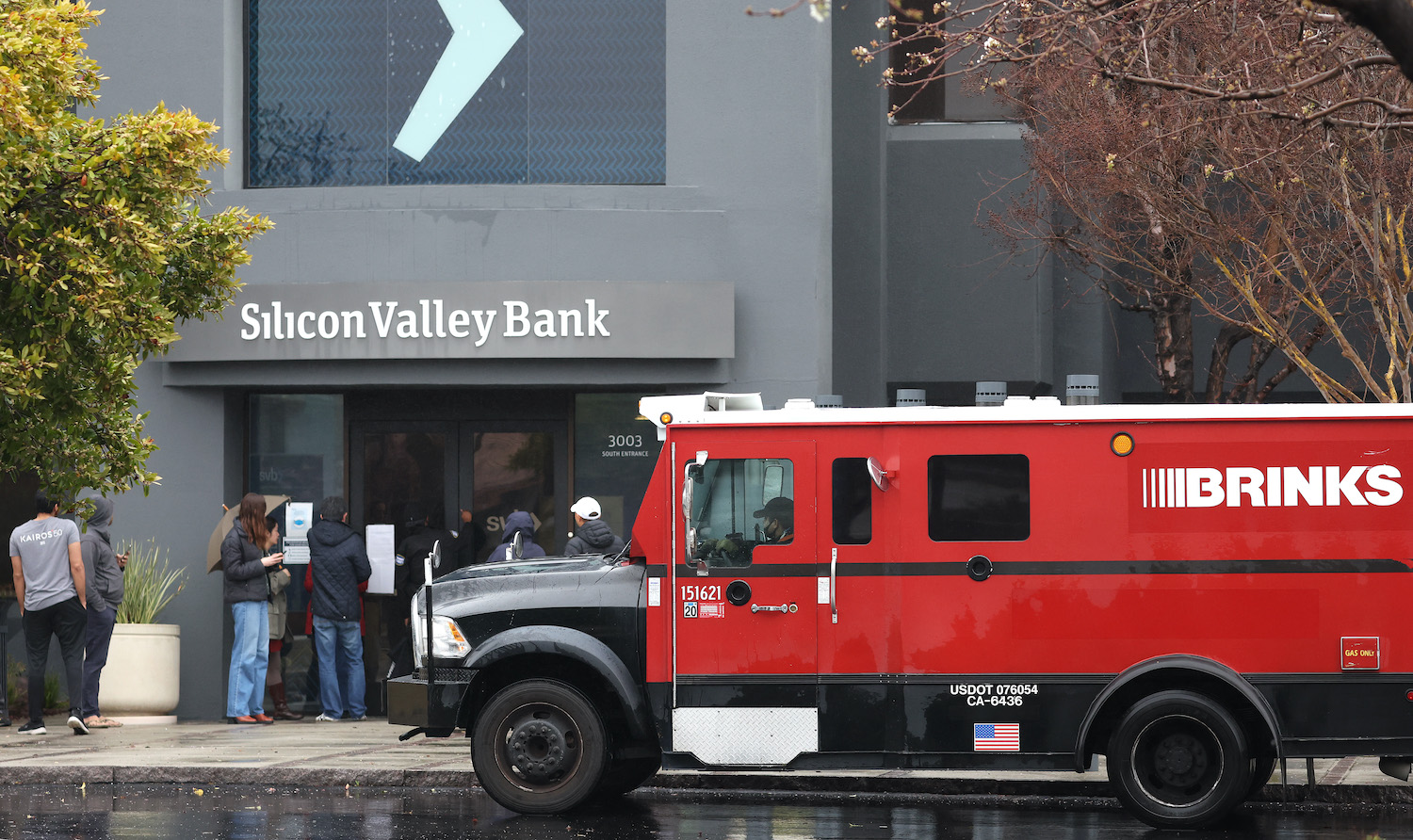Silicon Valley Bank is dead. As its name suggests, the 16th-largest bank in the United States did the bulk of its business with tech companies, who, maybe you have heard, have spent the last year contracting and otherwise suffering the concussive effects of the cheap money tap being turned off. SVB had been around since the early '80s, though it intertwined its fortunes to those of the tech sector to an unsustainable degree, which led to last week's old-fashioned bank run. The mechanics of how SVB destroyed itself and imperiled its $200-plus billion in assets are impressively arcane, yet the story is altogether not that complicated: They placed the wrong bets on the wrong securities, at the wrong times, for the wrong reasons.
Here is the simplest way I can explain what went wrong at SVB: Unlike most banks, SVB did not make many loans. Tech companies are overwhelmingly funded by venture capitalists, not banks, so while SVB was a natural place to store tech money, the bank didn't have a natural outlet to make a nice bit of interest on all that cash they had. And, man, they had so much cash! Total bank assets swelled 83 percent between the start of 2020 and the end of 2021. SVB needed something to do with all that money, and as Matt Levine wrote for Bloomberg on Friday, SVB bought a bunch of bonds. They invested a ton of their money in long-term fixed-rate mortgage bonds (sure that's fine, nothing to worry about), the exact sort of asset whose value scales inversely to interest rates (oh, never mind!). When the Federal Reserve raised interest rates last year, SVB was exposed, a risk that was compounded by their client base of startups and tech companies, whose stature and plenitude are low-interest rate phenomena.
A great Financial Times story on SVB's downfall makes clear that accepting the risk of the long-term bonds came with the payoff of an infinitesimally better rate of return (0.4 percentage points higher than one-year bonds), a maneuver SVB pursued to reassure stockholders as regulation loomed.
One person directly involved in the bank’s finances attributed the policy to a change of leadership within SVB’s key finance functions in 2017 as its assets marched towards $50bn, a threshold in which it would be labelled a “systemically important” lender subject to greater regulatory scrutiny.
Financial Times
When interest rates rose and the value of the bonds fell, SVB liquidated around $20 billion at a $1.8 billion loss, which they attempted to patch over by selling some stock. This triggered enough skepticism for several VCs, notably the Peter Thiel-owned Founders Fund, to pull their money. The panic compounded, SVB stock tanked 90 percent, and here we are, examining the still-warm corpse of Silicon Valley Bank, which will be buried alongside the crypto bank Silvergate, which died two days earlier.
The operative question now is what becomes of all that money, which is where some of our old friends enter the picture. Their argument is basically: tech is the American economy, and to leave us hanging in the wind at all is a potentially fatal blow to the only growth engine remaining in this country. It's a national security issue, a nail in the coffin of all life on Earth. The Federal Deposit Insurance Corporation took the bank into receivership this past Thursday, and the regulatory body will attempt to sell SVB as soon as possible, probably to a bigger bank. The FDIC only insures deposits up to $250,000, and while depositors who had more than a quarter million in the bank will be awarded receivership certificates, the process by which they will be reimbursed is not yet clear. A whopping 93 percent of the bank's deposits were uninsured. The Treasury Department has a two-pronged goal of making depositors whole and cordoning off the fallout, so it seems likely that everyone will get their money and SVB, its executives, and shareholders will not be handed an extra life, bailed out, or allowed to continue operating as a bank.
There's a significant difference, then, between backstopping depositors who stand to lose millions of dollars and bailing out SVB (which doesn't seem like it's going to happen). The only case for saving SVB as an institution is necessarily a hysteric one: if the bank is not saved, the logic goes, it will trigger a massive series of bank runs and the eventual collapse of the financial system. It's a Hail Mary case, one that requires a bunch of dudes who stand to lose a bunch of money if SVB goes fully kaput convincing those in power that the death of SVB is an extinction event on the level of the 2008 financial crisis. Few are making that case, though the tech world stands to lose big if deposits aren't restored, and a bunch of regular people and small- and mid-sized companies stand to suffer if this isn't resolved fast. They have become grist for the mill, as all of a sudden vultures who cheered Twitter layoffs and built gig companies that exploit workers are now seemingly worried about "Main Street," as if they're lining up for the Iowa caucus.
A person could think that raising alarm bells and stoking the sort of fear that leads to bank runs is some very risky brinksmanship, but that person is clearly not as smart as Jason Calacanis, a guy whose podcast was sponsored by SVB and whose bloodsucking livelihood is tied up in hoovering up free money. Also, VCs like him sparked this bank run in the first place. This is a lot of concern about people not getting the money they're owed from a guy who owes this website $500,000.
ON MONDAY 100,000 AMERICANS WILL BE LINED UP AT THEIR REGIONAL BANK DEMANDING THEIR MONEY — MOST WILL NOT GET IT
— @jason (@Jason) March 12, 2023
THIS WENT FROM SILICON VALLEY INSIDERS ON THURSDAY TO THE MIDDLE CLASS ON SATURDAY — MAIN STREET FINDS OUT MONDAY
It is extremely funny that a small group of obscenely wealthy tech guys who owe their obscene wealth to getting lucky and picking the correct regulatory arbitrage schemes to invest in, and whose entire public image is self-made, anti-regulation, pro-innovation are now crying to the government for help. There's only a difference in degree, not kind, between begging for a bailout and a guarantee on all deposits when your wealth and status are the byproducts of lax regulation and the low-interest rate economy. Also, this guy, who is somehow a dumber version of Jason Calacanis, has spent years hawking crypto and making an anti-Fed case to do so.
I’m not asking for a bailout. I’m asking for banking regulators to ensure the integrity of the system. Either deposits in the US are safe or they’re not. If not, look out below. We have a very big problem on our hands. https://t.co/57437vv7gu
— David Sacks (@DavidSacks) March 12, 2023
So which is it, dingdongs? Government good or government bad? Ultimately, Silicon Valley Bank did everything it could to weaken banking regulations and provide cover to a single industry built on libertarian ideals that wasn't afraid to run up the tab in search of a better future. And in the end, they got everything they wanted.






